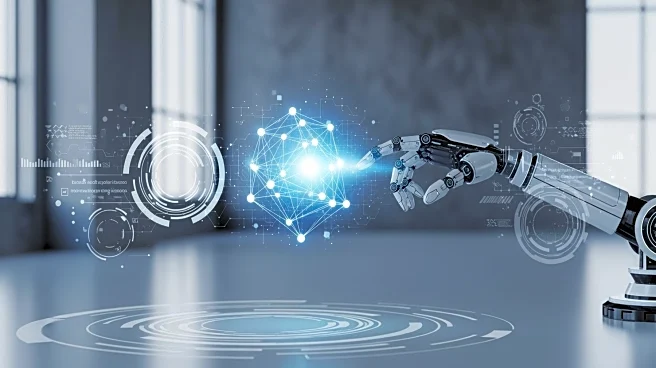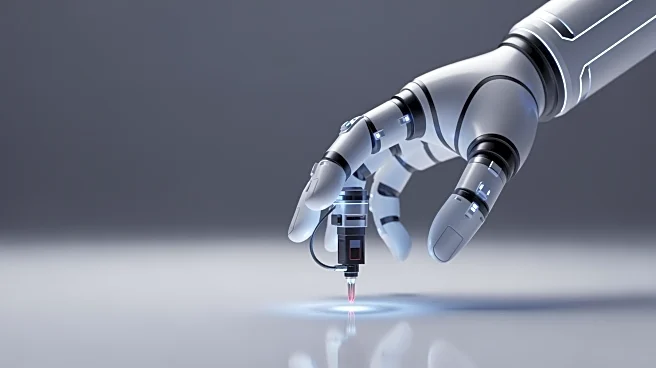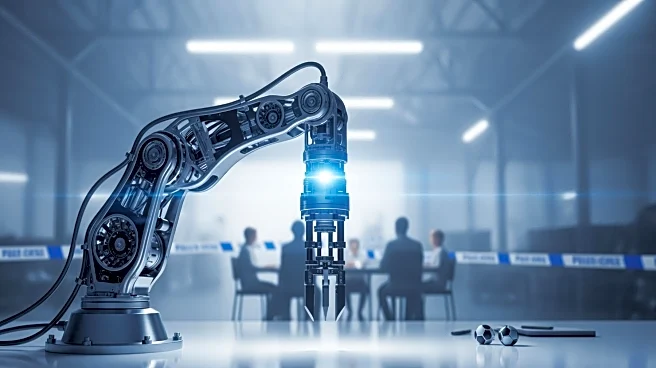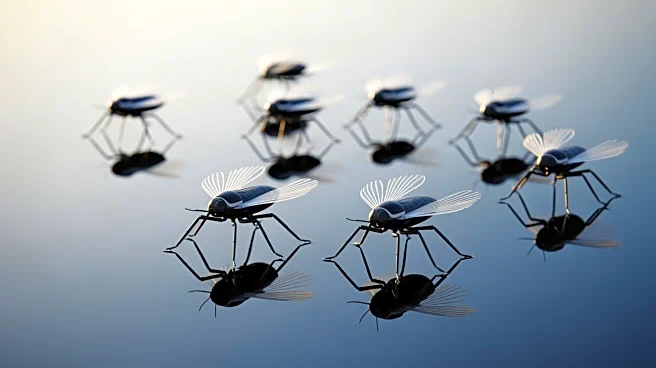What's Happening?
Researchers at Worcester Polytechnic Institute, led by Nitin J. Sanket, are advancing robotics by developing drones inspired by bats. These drones utilize AI and ultrasound technology to navigate challenging environments, aiming to aid in search and rescue
operations. The design incorporates adaptive 3D-printed structures, drawing inspiration from the biological flight mechanisms of bats. Additionally, similar efforts are underway at Caltech and the University of Illinois at Urbana-Champaign, where the Bat Bot (B2) has been created. This autonomous flying robot mimics bat flight using soft, articulated wings and custom-made silicon skin, enhancing efficiency and safety in flying robots.
Why It's Important?
The development of bat-inspired robotic drones represents a significant advancement in robotics, particularly in search and rescue operations. These drones can navigate complex environments, potentially saving lives in disaster scenarios. The use of AI and ultrasound technology in these drones highlights the growing integration of advanced technologies in practical applications. This innovation could lead to more efficient and safer rescue missions, benefiting emergency response teams and affected communities. Furthermore, understanding bat flight dynamics through these robots could inspire future designs in robotics and aerodynamics.
What's Next?
The continued development and testing of these bat-inspired drones will likely focus on improving their navigation capabilities and operational efficiency. Researchers may explore additional applications beyond search and rescue, such as environmental monitoring or wildlife conservation. As these technologies advance, collaboration with emergency services and government agencies could facilitate the integration of these drones into official rescue protocols. The success of these projects may also encourage further investment in bio-inspired robotics, expanding their use in various sectors.
Beyond the Headlines
The ethical implications of using AI-driven drones in search and rescue operations include concerns about privacy and data security. Ensuring that these technologies are used responsibly and transparently will be crucial. Additionally, the cultural impact of bio-inspired robotics may influence public perception of technology, fostering greater acceptance and interest in scientific innovation.














